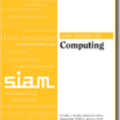In the $k$-Edit Circular Pattern Matching ($k$-Edit CPM) problem, we are given a length-$n$ text $T$, a length-$m$ pattern $P$, and a positive integer threshold $k$, and we are to report all starting positions of the substrings of $T$ that are at edit distance at most $k$ from some cyclic rotation of $P$. In the decision version of the problem, we are to check if any such substring exists. Very recently, Charalampopoulos et al. [ESA 2022] presented $O(nk^2)$-time and $O(nk \log^3 k)$-time solutions for the reporting and decision versions of $k$-Edit CPM, respectively. Here, we show that the reporting and decision versions of $k$-Edit CPM can be solved in $O(n+(n/m) k^6)$ time and $O(n+(n/m) k^5 \log^3 k)$ time, respectively, thus obtaining the first algorithms with a complexity of the type $O(n+(n/m) \mathrm{poly}(k))$ for this problem. Notably, our algorithms run in $O(n)$ time when $m=\Omega(k^6)$ and are superior to the previous respective solutions when $m=\omega(k^4)$. We provide a meta-algorithm that yields efficient algorithms in several other interesting settings, such as when the strings are given in a compressed form (as straight-line programs), when the strings are dynamic, or when we have a quantum computer. We obtain our solutions by exploiting the structure of approximate circular occurrences of $P$ in $T$, when $T$ is relatively short w.r.t. $P$. Roughly speaking, either the starting positions of approximate occurrences of rotations of $P$ form $O(k^4)$ intervals that can be computed efficiently, or some rotation of $P$ is almost periodic (is at a small edit distance from a string with small period). Dealing with the almost periodic case is the most technically demanding part of this work; we tackle it using properties of locked fragments (originating from [Cole and Hariharan, SICOMP 2002]).
翻译:暂无翻译




